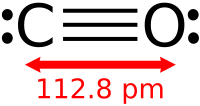
Photo from wikipedia
Solar radiation modification (SRM) reduces the CO2‐induced change to the mean global hydrological cycle disproportionately more than it reduces the CO2‐induced increase in mean surface temperature. Thus, if SRM were… Click to show full abstract
Solar radiation modification (SRM) reduces the CO2‐induced change to the mean global hydrological cycle disproportionately more than it reduces the CO2‐induced increase in mean surface temperature. Thus, if SRM were used to offset all CO2‐induced mean warming, global‐mean precipitation would be less than in an unperturbed climate. Here, we show that the mismatch between the mean hydrological effects of CO2 and SRM may partly be alleviated by spectrally tuning the SRM intervention (reducing insolation at some wavelengths more than others). By concentrating solar dimming at near‐infrared wavelengths, where H2O has strong absorption bands, the direct effect of CO2 on the tropospheric energy budget can be offset, which minimizes perturbations to the mean hydrological cycle. Idealized cloud‐resolving simulations of radiative‐convective equilibrium confirm that spectrally tuned SRM can simultaneously maintain mean surface temperature and precipitation at their unperturbed values even as large quantities of CO2 are added to the atmosphere.
Journal Title: Geophysical Research Letters
Year Published: 2021
Link to full text (if available)
Share on Social Media: Sign Up to like & get
recommendations!